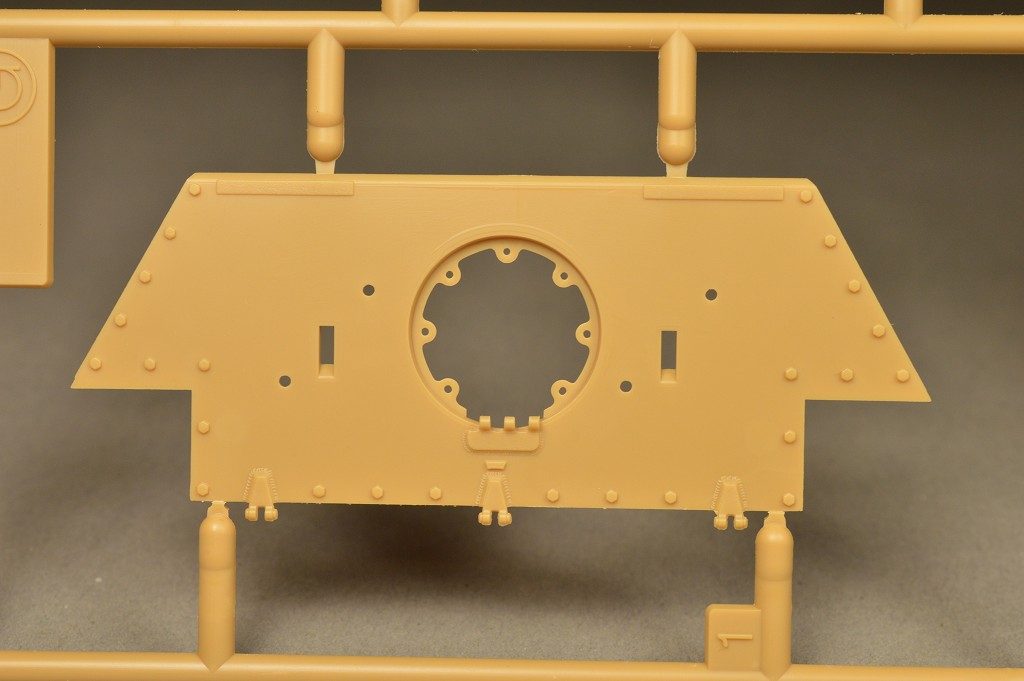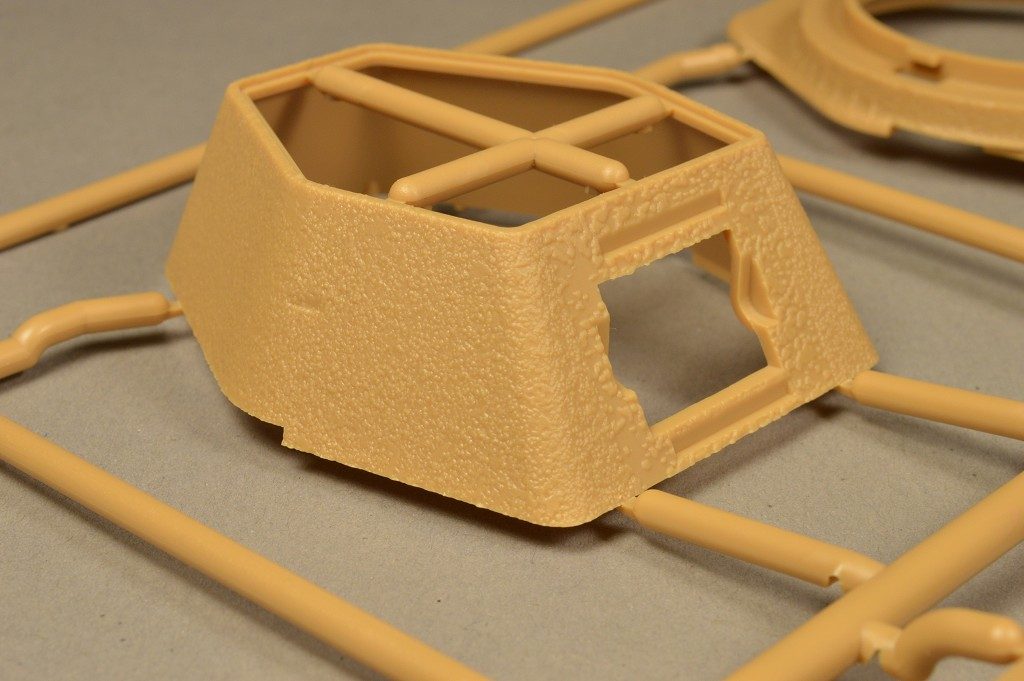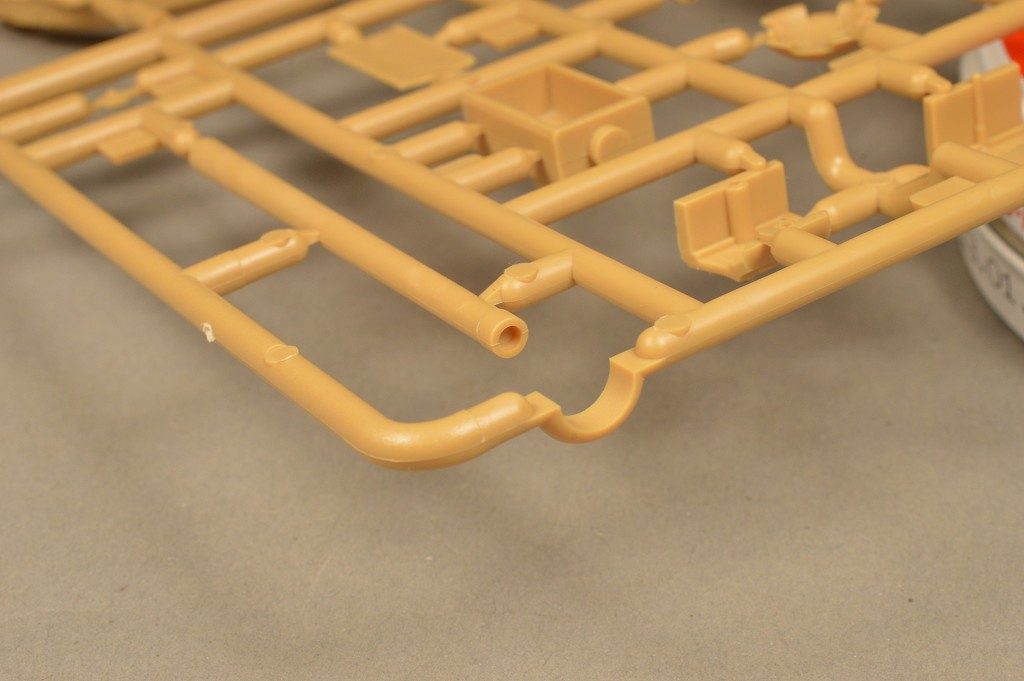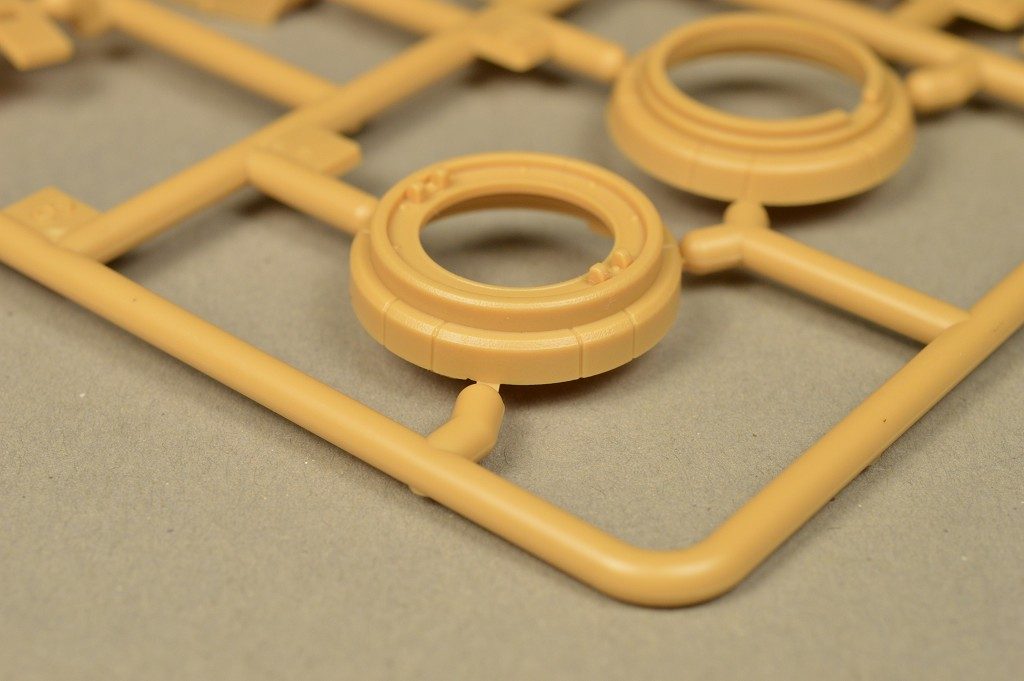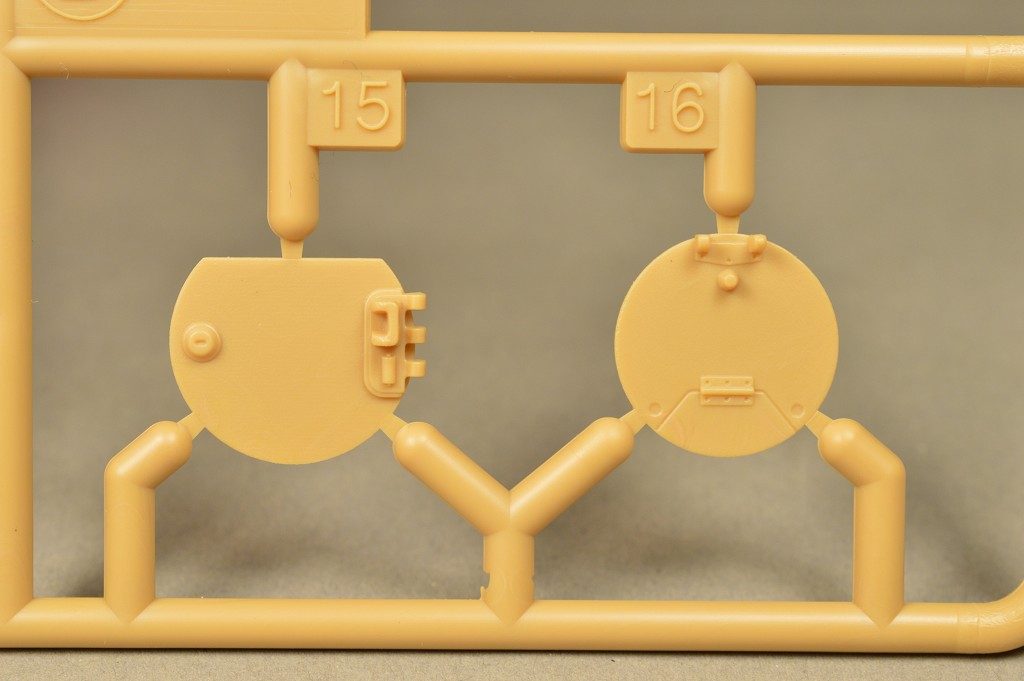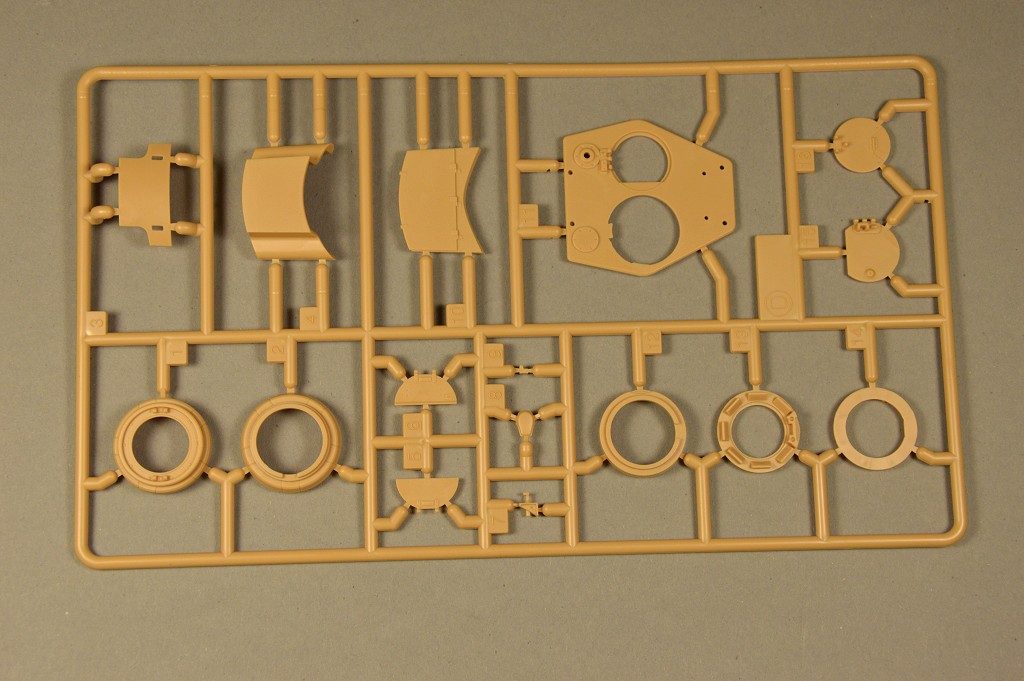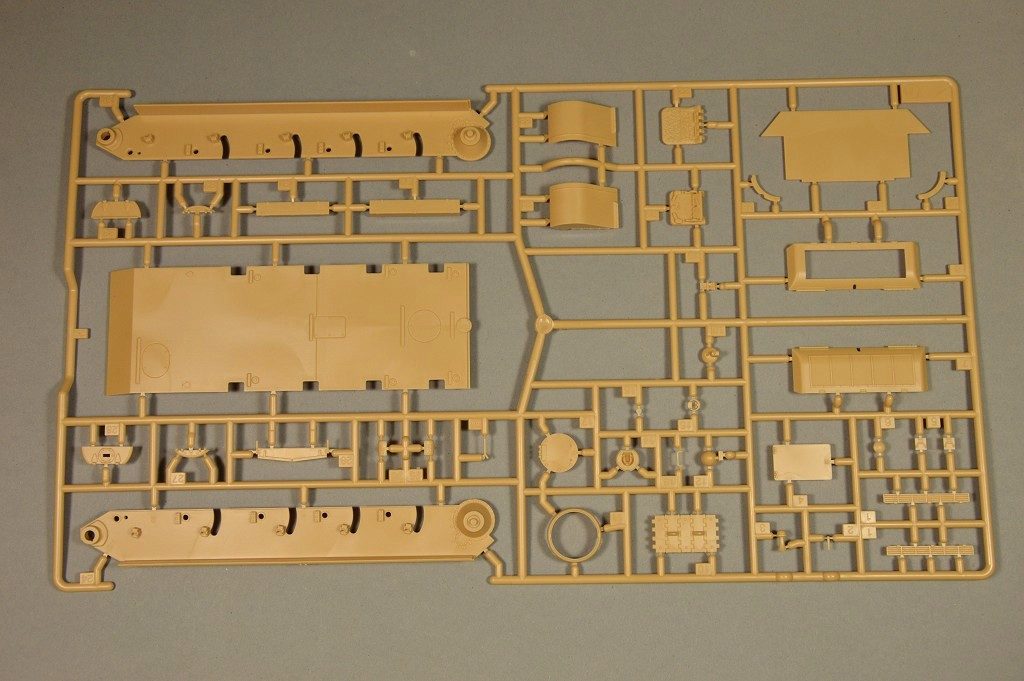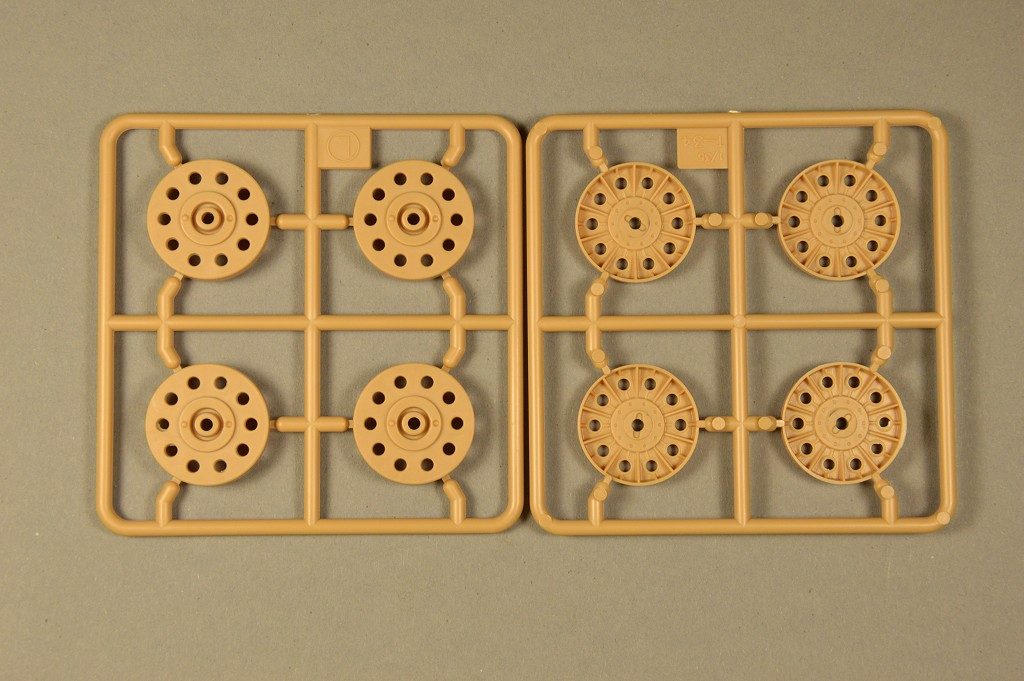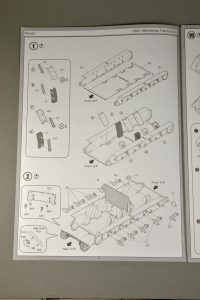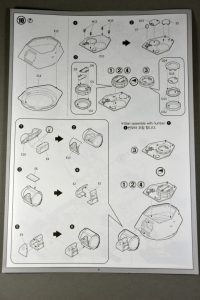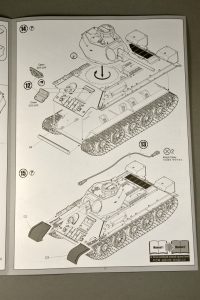Philipp Gross takes a look at a slightly different T-34 kit by Academy…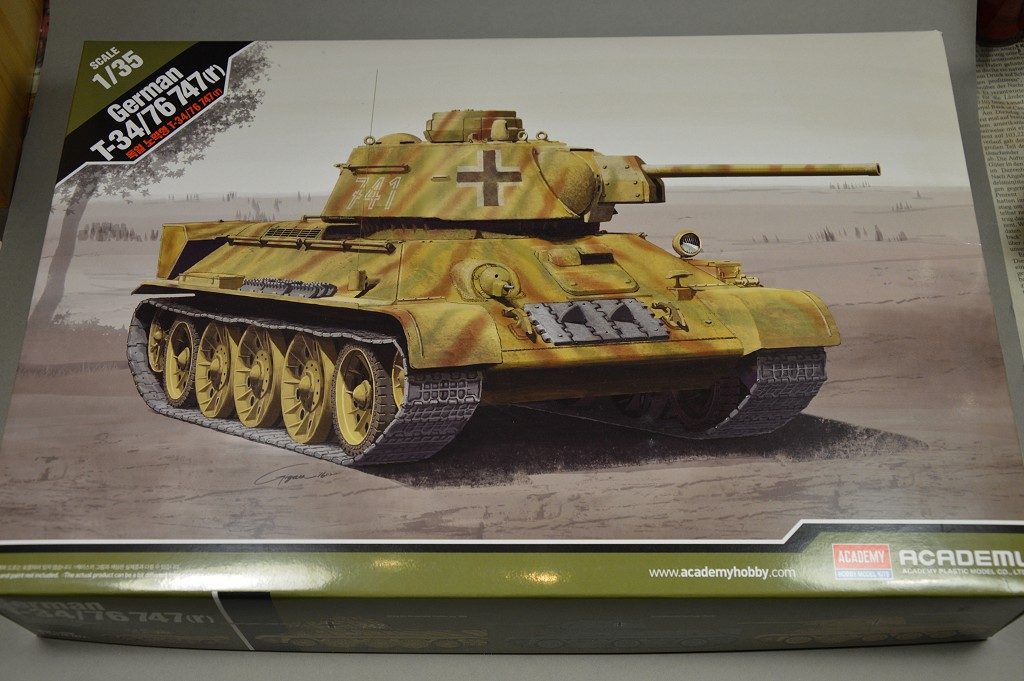
Overview:
Following on the T-34/85 from 2015, Academy has now released a kit of the earlier T-34/76 with hexagonal turret. The kit uses mostly new sprues with only the lower hull, the dish-type wheels and a few minor hull parts carried over from the T-34/85. Curiously enough it’s not a Red Army tank but rather a German Beutepanzer version with a few changes, most notably the German commander’s cupola. These were added to a few captured tanks to improve the situational awareness for the commander, which was bad enough considering he also had to aim and fire the main gun. The vast majority of German T-34s however were used with no modifications at all, except for a few oversized Balkenkreuze to prevent friendly fire.
The seemingly countless prodution varieties of the T-34 are daunting (and heavily confusing) for anyone who hasn’t spent years researching the matter, so I leave more in-depht commentary to all the экспе́рты on the internet and just comment as far as my delusions of knowledge will allow me.
The kit represents a T-34/76 as built by Factory 183 from mid 1942 to early 1943. Factory 183 produced the majority of T-34s during that period so it’s a safe choice for most tanks of that era. The turret is of the “sharp edge” variety, which means the forward lower edges of the turret. There was also a less common “soft edge” version as well as a fairly rare stamped turret, made from a single steel plate using a monstrous hydraulic press. The kit comes with a modified turret roof plate to accept the German cupola, so you can’t build it as a standard Soviet version. However, one of these has now been released as well (No. 13505)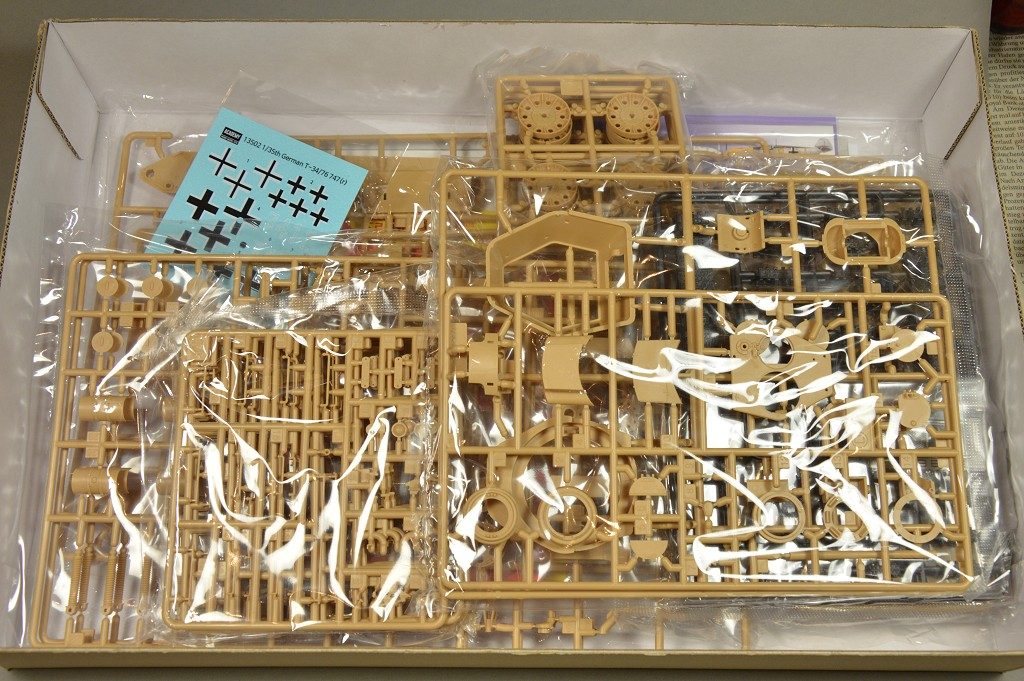
Upon opening the box you are greeted by a heap of cream coloured plastic, with all sprues wrapped in plastic bags. I didn’t notice any damage or loose parts when I opened them, which is always a good sign.
Lower Hull:
The lower hull comes as a traditional multi-part assembly with floor and side parts, with the lower front plate attached to the floor. These are all carried over from the T-34/85 kit, and while there certainly were some slight differences, I’m sure a lot of people won’t notice or care about details you usually don’t see on the finished model. The rear plate with the final drive covers has been included on one of the new sprues, curiously enough it’s completely devoid of any cast texture, in stark contrast to most other “cast” parts.
There are three full sets of wheels included, which gives you a lot of options for building different T-34s. The first type, “dish” style wheels, are carried over from the previous T-34/85. These were used both in the beginning of T-34 production and later reintroduced for the T-34/85. A number of T-34 with hexagonal turrets had them as well, and there are two marking options included which used them.
The second version is commonly called the “spider” wheel. These were most common during the 1942-1943 period, with most tanks in 1942 having these in the 1st and 5th position and full steel wheels on the others, while later models had a full set of them. The wheels changed apperance during production several times. Those included in the kit are a later version with an inner set of holes, which were more common from 1943 onwards. Earlier wheels only had the outer set of holes. The difference is hard to spot on most photos however.
The final type is the cast all-steel wheel, introduced during the desperate days of late 1941 to save on rubber, which was running low until Allied Lend-Lease supplies came into effect. As mentioned, most tanks of the 1942-43 period used only three of these on the inner stations since the vibrations caused by a full set of the undampened wheels were considered unbearable, even by Red Army standards.
The tracks supplied are of the link & lenght variety and depict the “waffle” pattern most commonly seen from 1942-43 onwards. For me this is a real argument in favour of the kit, since vinyl tracks will have the huge links inevitably bend around the sprockets and idlers. There are a number of shallow ejector marks on every second link, which in unfortunate but should be hard to see on the finished model. Filling them in shouldn’t be too hard either.
Upper Hull:
The upper hull is all new tooling and has for the most part nicely rendered details with sharp definition. The MG mount has a faint cast texture which should be improved by a method of choice. The same goes for the various weld seams, which look a little too neat for the standards of the time. The driver’s hatch has been carried over from the previous kits and comes with a fairly heavy cast texture that should be smoothed out a little. On the hull front there are two holes for spare track links which need to be filled if you don’t want to attach these. Another selling point for this kit compared to others in its price range is the inclusion of a photo-etched mesh for the large air intake on the hull rear. An alternate part with the mesh moulded in place is also included. The louvers that go underneath the mesh are also included, so you’re not staring into a black void underneath. We get a piece of string for the tow cables, which is best replaced by some metal cable. The earlier box-style fuel tanks for mouning on the hull rear are included. There are also additional cylindrical fuel tanks included as leftovers from the T-34/85. These are not needed for the decal options included and in fact were missing on most 1942 era tanks but were often retrofitted when older tanks were sent back for a factory overhaul. The single headlight doesn’t come with a clear part, but it is hollowed out to depict it with the glass shot away. Two of the options only have an empty bracket instead.
Turret:
As mentioned, the turret is the hexagonal “sharp edge” variety with two hatches and (originally) no cupola. The turret walls are moulded as a single piece with an extra roof plate and turret ring. The vision ports of both sides need to be added and blended in with putty. Everything is covered by a fairly solid sand texture. While it is true that these turrets were cast in sand moulds, it seems greatly oversized and far too uniform, so there’s once again need for improvements. The same is true for the fixed parts of the gun mantlet.
The gun barrel comes as a single slide-moulded piece, which removes the need to carefully align two halves and then to smooth out the resulting seams. However the muzzle is only hollowed out for about 2-3 mm, with the solid interior clearly visible.
As mentioned, the turret roof is a modified version to accept the German cupolas, so you can’t build this as a standard Soviet tank. There are two types of German cupolas included, the standard Panzer III/IV version as well as a StuG III cupola. The latter is used on a single marking option. Both cupolas have fairly basic details, with the Panzer III/IV cupola being moulded with all vision ports shut. There is also no interior detail whatsoever, so your best option might be to fill the void with a figure (which is, by the way, not included). There’s also a Panzer III turret stowage bin included, which is required for one of the options. Like the cupolas, the overall details are fairly basic. Generally speaking, the German-specific parts all look slightly less defined than those for the rest of the tank.
Decals:
There are four (technically 5) marking options for various German tanks:
No. 1 depicts either 741 or 742 of Panzer Regiment 11, 6th Panzer Division at Kursk in 1943. It is painted in overall dark yellow with green and brown stripes all over. All tanks of that regiment carried the letters “Op”, after its commander Hermann von Oppeln-Bronikowski. These are regrettably missing. Surviving photos show it applied to the centre of the hull front as well as on the hull rear in the middle of the circular access hatch.
No. 2 and 3 are tanks used by unknown units in Karelia during 1942-1943, with #2 being in Russian 4BO green and #3 in dark yellow. The latter is the sole version using the StuG cupola.
No. 4 is a tank of the 1st Skijäger-Division in the Pripyat area of eastern Ukraine in early 1944. It’s supposed to be in dark yellow, but photos of the vehicle would rather suggest an overall whitewash. As the only version it uses the Panzer III stowage box on the turret rear.
The print quality (“printed in Korea”) seems adequate. On some of the crosses the black and white seems shifted out of register for a few micrometres, but one should remember that on the real tanks these were often hastily applied in the field with huge stencils on uneven surfaces. The carrier film seems thin and is cropped fairly close. Their behaviour on the finished model remains to be seen.
Conclusion:
I guess it’s quite obvious not a high end kit as made my AFV Club or Dragon (sometimes). On the other hand it’s a lot cheaper and has a few nice options very few other T-34 kits bother to include. The slide-moulded barrel, styrene tracks and photo-etched mesh means it can be build OOTB without an urgent need for aftermarket additions. Of course the more dedicated modeller will find plenty of things to improve or replace. The fact that it comes as a dedicated Beutepanzer surely will make it popular with those more inclined towards the German side of armour.
To sum it up:
+ Low price
+ Optional Beutepanzer parts
+ L&L Tracks and etched mesh included
+ Interesting decal options
– Weak details in some areas
– No clear parts
– String for tow cables
– Unrealistic cast texture
This kit has been purchased privately. A full build, which will hopefully discover any potential flaws, will commence as soon as time permits.







